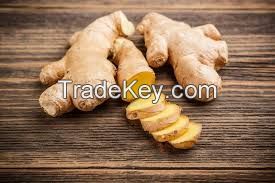详情
Ginger, also known as Zingiber officinale, is inaccurately referred
to as ginger root, although the edible section sold in the markets
and used in dishes is actually the stem or the rhizome. In many
places, it is mostly used in sweets and alcoholic beverages such as
ginger beer and wine.
However, in Asian cultures, it is directly used by chopping it up
or using its powder in traditional dishes and in soft drinks such
as coffee and tea. Gingers irresistible fragrance is due to an
essential oil in its composition that has been coveted and
extracted by perfume makers since ancient times.
Not only is ginger known as an essence and a spice, it is known to
be one of the oldest remedies in herbal and aromatic traditional
treatments, especially in China, India, and the Middle East. In
China, it has been used for over 2,**0 years for curing
inflammation and diarrhea. Native to the Indo-Malaysian rain
forests, ginger favors lush, moist, tropical soils for
cultivation.
Its cultivation may have begun in southern Asia, but it has now
spread to East Africa and the Caribbean as well. Gingers perennial
plant grows bright red flowers that come in different shapes such
as torch and honeycomb and are often used in seasonal festivals in
the South Pacific for the decoration of stalls, houses, and even
dresses
Queen Elizabeth I of England, a fan of ginger herself, was the one
to invent the gingerbread man in the *6th century, and it is now
loved by millions of children (and adults) around the world. The
gingerbread man was presented at a Royal ball, and several were
made to resemble respected guests as well.
